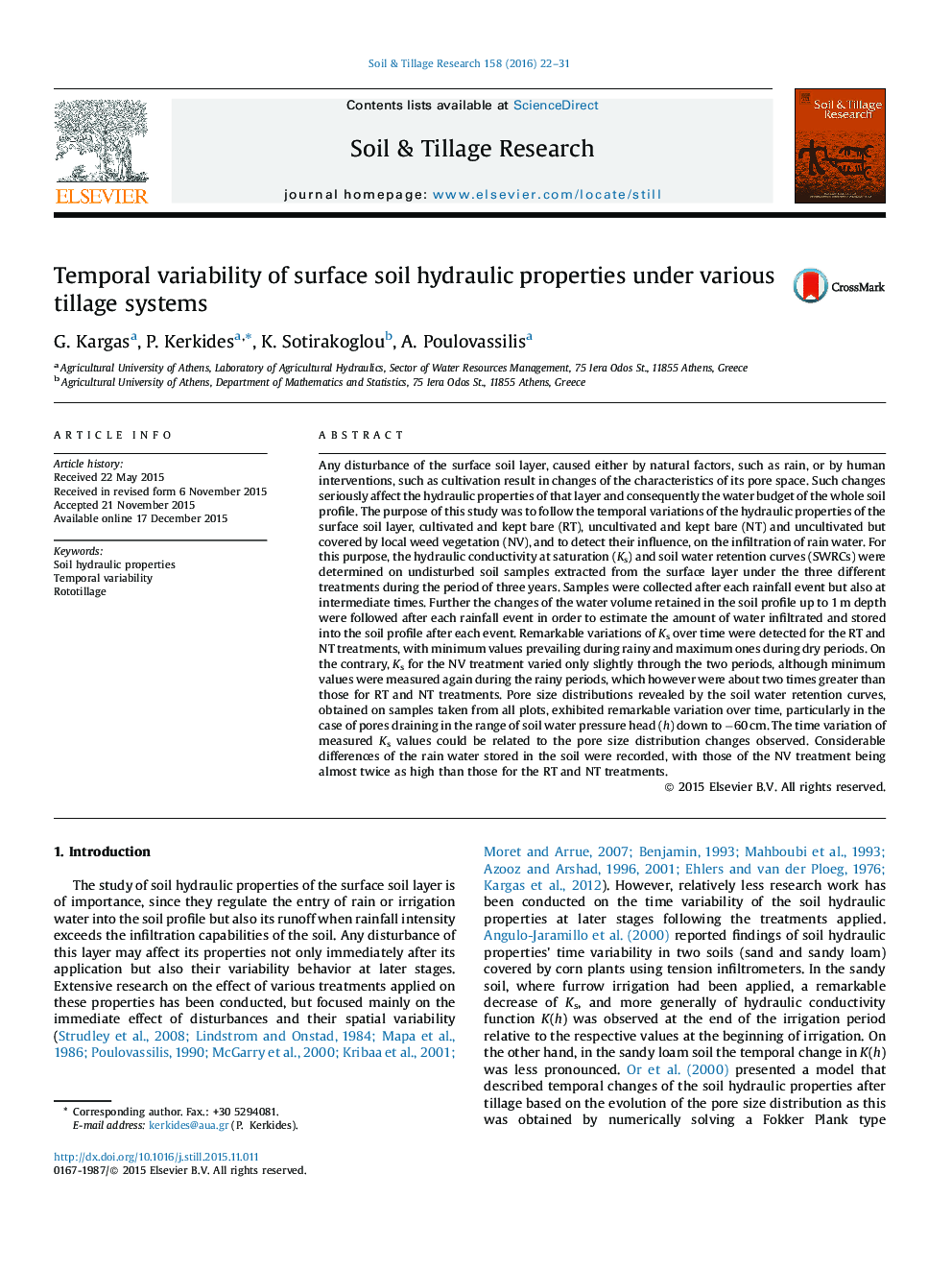| Article ID | Journal | Published Year | Pages | File Type |
|---|---|---|---|---|
| 305411 | Soil and Tillage Research | 2016 | 10 Pages |
•Upper soil layer hydraulic properties and soil water storage.•The relevance of soil hydraulic properties on the rain water infiltration.•The effect of dry and rainy periods on the hydraulic properties.•The effect of soil management treatments on soil hydraulic properties.
Any disturbance of the surface soil layer, caused either by natural factors, such as rain, or by human interventions, such as cultivation result in changes of the characteristics of its pore space. Such changes seriously affect the hydraulic properties of that layer and consequently the water budget of the whole soil profile. The purpose of this study was to follow the temporal variations of the hydraulic properties of the surface soil layer, cultivated and kept bare (RT), uncultivated and kept bare (NT) and uncultivated but covered by local weed vegetation (NV), and to detect their influence, on the infiltration of rain water. For this purpose, the hydraulic conductivity at saturation (Ks) and soil water retention curves (SWRCs) were determined on undisturbed soil samples extracted from the surface layer under the three different treatments during the period of three years. Samples were collected after each rainfall event but also at intermediate times. Further the changes of the water volume retained in the soil profile up to 1 m depth were followed after each rainfall event in order to estimate the amount of water infiltrated and stored into the soil profile after each event. Remarkable variations of Ks over time were detected for the RT and NT treatments, with minimum values prevailing during rainy and maximum ones during dry periods. On the contrary, Ks for the NV treatment varied only slightly through the two periods, although minimum values were measured again during the rainy periods, which however were about two times greater than those for RT and NT treatments. Pore size distributions revealed by the soil water retention curves, obtained on samples taken from all plots, exhibited remarkable variation over time, particularly in the case of pores draining in the range of soil water pressure head (h) down to −60 cm. The time variation of measured Ks values could be related to the pore size distribution changes observed. Considerable differences of the rain water stored in the soil were recorded, with those of the NV treatment being almost twice as high than those for the RT and NT treatments.
